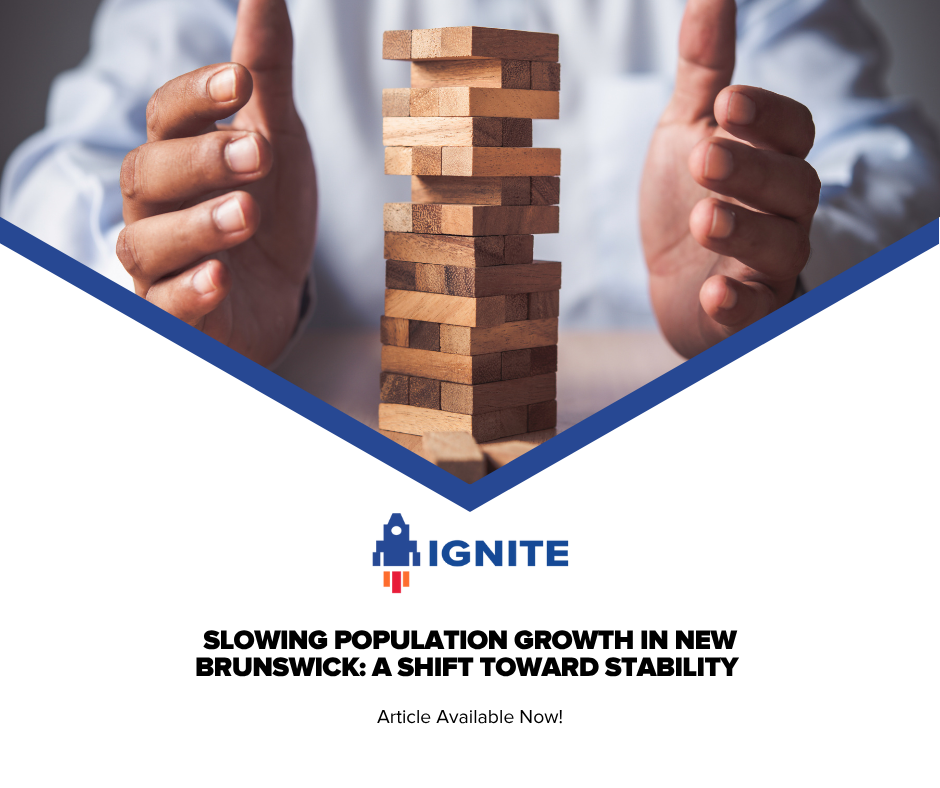ECONOMIC SNAPSHOT
Below is a comprehensive snapshot of the current economic landscape in the Capital Region.
By clicking on the dashboard tiles below, you will find further information and data on the topics that most interest you.
In our quest to provide a comprehensive overview of the Capital Region, we did encounter some data limitations. To compensate, we used data that reflects Central New Brunswick region and Fredericton City, which closely align with our region's characteristics. This approach allowed us to provide a more complete perspective on demographics, the economy, and lifestyle in the Capital Region, despite data gaps.
Data Sources
Our insights are drawn from a variety of reputable sources, including the 2021 Census and government reports. We have utilized data from Statistics Canada, Fredericton Tourism, and the Government of New Brunswick to provide a comprehensive view of our region's demographics, economy, and more. Additionally, we have employed resources like D&B Hoovers for business data, Google Maps for commute information, and IBIS World for industry research. The Canada Mortgage and Housing Corporation (CMHC) has contributed data on rent prices and housing trends in Fredericton. The data on this page will be monitored and updated as it is available.
If you have any questions or comments, please reach out to our Economic Specialist, Deepty Sarder
Economic Outlook
Check out our data-driven articles and resources below to learn more about the Capital Region.
Productivity is the foundation of New Brunswick’s economic growth and our province's competitiveness. As current gaps continue to limit long-term progress, strengthening productivity has never been more essential. Discover why this matters now and how New Brunswick can drive meaningful, sustained growth in our latest article.
New Brunswick’s population grew by 0.1% in Q2 2025, the slowest quarterly increase since the 1.0% peak in late 2023. This slowdown reflects a shift toward more sustainable immigration policies. While growth has tempered, the continued increase remains encouraging, offering time to align housing and services—though it may challenge labour force and economic expansion.
Read More now!
Home prices in New Brunswick continued their upward trend in April 2025, with the composite benchmark price reaching $325,600—up 7% year-over-year and 85% higher than five years ago.
In March, New Brunswick’s labour market held steady with a 2.2% rise in employment compared to last year. Full-time positions led the growth, adding 12,800 jobs, while part-time roles declined. The shift reflects improving job quality and growing employer demand as the province heads into spring.
According to the latest data from Statistics Canada, as of July 1, 2024, New Brunswick's population reached 854,355, marking a 2.7% increase from the previous year. The Fredericton-Oromocto economic region grew to 151,902 residents, an increase of 4,139, primarily due to a net gain of 3,621 international migrants.
New Brunswick's unemployment rate rose to 7.8% in December 2024, reflecting an increase in job seekers entering the market. Despite a 2% rise in employment and a growing labour force, the market struggled to match the influx of new workers. This highlights both opportunities and challenges as the province's labour market evolves.
In the dynamic immigration landscape of Atlantic Canada, Ignite spearheads innovative solutions for inclusive communities. Their focus on economic integration, community inclusion, and comprehensive support is paving the way for diverse, thriving societies.
Welcome to the Capital Region, located in the heart of New Brunswick. This dynamic region is home to a mix of vibrant communities that each boast their own unique landscapes, industries, attractions, and businesses. Check out our Entity Profiles below to learn more about these vibrant communities and what they have to offer.
The purpose of this report is to present an economic analysis of the the Western New Brunswick Region, including gathering and analyzing information on demography, immigration, labour force, income, businesses, major industries and sectors.
Previous to regionalization, Ignite offered economic assistance to Fredericton, New Maryland, and Oromocto. Starting in early 2023, Ignite expanded its assistance to the 13 formed entities in the RSC 11. The purpose of this report is to present an economic analysis of the Capital Region. This included gathering and analyzing information on demography, immigration, labour force, income, businesses, major industries and sectors. CLICK here to access the report













